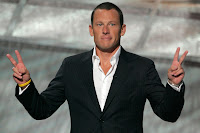Ten fingers. That’s all we’ve been handed (pun intended). So when it comes to forming important symbols with those fingers, we’re bound to have signs with multiple -- and sometimes ambiguous -- overlapping meanings.
 Perhaps most ambiguous is the “peace” and “victory” symbol -- made more confusing still, depending on who’s using the signage and for what reason. (Think back to the iconic Richard Nixon helicopter sign-off V-shot, as the disgraced leader left the White House). Formed with an extended pointer and middle finger at roughly a 30-degree angle at the tips, implicit in the victory symbol is recent violence (victory achieved), while the peace symbol, embraced by Sixties-era counterculture and anti-Vietnam protesters, suggests an end to the fight
Perhaps most ambiguous is the “peace” and “victory” symbol -- made more confusing still, depending on who’s using the signage and for what reason. (Think back to the iconic Richard Nixon helicopter sign-off V-shot, as the disgraced leader left the White House). Formed with an extended pointer and middle finger at roughly a 30-degree angle at the tips, implicit in the victory symbol is recent violence (victory achieved), while the peace symbol, embraced by Sixties-era counterculture and anti-Vietnam protesters, suggests an end to the fightSubtle difference -- but important.
These were the symbolic question marks bouncing around my head last week after reading a Businessweek article about the famed -- but not yet infamous -- athlete superstar Lance Armstrong and the continued prospering of his image and brand. Speaking of image, the article featured a picture of Armstrong in a very Nixon-esque pose holding out two V-signs. My goodness -- if you include the position of his elbows you could almost see four V-signs. His mouth is neither smile or smirk, and his blue eyes appear far off. If that’s not the image of ambiguity, then I’m not sure what is.
For background: Armstrong, 40, has for years been dogged by doping accusations. Recently, in a very public back-and-forth with the United States Anti-Doping Agency (USADA), the cyclist has refused further blood tests and inquiries to confirm (ostensibly once and for all) whether the accusations are true. In a statement to the Associated Press he characterized USADA’s mission as nothing more than “an unconstitutional witch hunt.”
“I have been dealing with claims that I cheated and had an unfair advantage in winning my seven Tours since 1999," read the August 23 statement. “Over the past three years, I have been subjected to a two-year federal criminal investigation followed by Travis Tygart's (USADA’s CEO) unconstitutional witch hunt. The toll this has taken on my family, and my work for our foundation and on me leads me to where I am today -- finished with this nonsense.”
The price for noncompliance, according to Businessweek: the likely stripping of seven Tour de France victories, the return of $7 million in prize money, the loss of a 2000 Olympic bronze, and a “lifetime ban from professional Olympic-style sports.” And as of this article’s writing, that includes the upcoming Chicago marathon on October 7.
But that’s only part of the story. The real story is that none of these developments have proven harmful to the Lance Armstrong brand. If anything, the us vs. them mentality that Armstrong and his PR machine have successfully stoked caused a 25-fold increase in the amount of donations to the Lance Armstrong Foundation, dedicated to “serving people affected by cancer.” And a quick review of his Web site’s News and Events section showcases nearly a dozen high-profile articles and opinion pieces supporting his stance from the cover of Newsweek, the LA Times, ESPN and a Forbes article titled “Why Lance Armstrong Still Matters,” among others.
So if that’s the real story, here’s the real question: Have Armstrong’s nonprofit efforts been negatively impacted by the near-scandal aura that surrounds him -- and to what extent should his effective public relations campaign be praised for its work or shunned for a brazen attempt to dodge responsibility?
In keeping with the ambiguous nature of this piece, here’s a frustrating answer: Yes and No.
In a perfect world we’d love our sports heroes to remain true to their legend -- to go through life unsullied by the nasty realities that befall us “regular” people. And in that sense, Lance Armstrong’s fight against USADA almost appears noble. Like another famous Armstrong who recently passed away, he’s protecting his carefully controlled image “for mankind.” So kudos to the brilliant PR tactic that likely will keep Armstrong a household name for decades to come.
But then, just for a moment, off comes my public relations cap, and I think of Nixon and that V-sign. Were Nixon’s outstretched arms and hands the sign for victory -- “Watergate will not send me to prison and to hell with the liberal media,” or was it truly symbolic for peace -- peace of mind that the Watergate tumult had ended and peace of spirit knowing that the national healing could begin? Considering Nixon’s quasi-nefarious character, I tend to believe the former.
As for Armstrong, his V-sign “mug shot” is as nearly uncertain. I guess, like Nixon, only through the passage of time will his true actions and intentions become clearer.
Until then, this V is peacing out!












No comments:
Post a Comment
Comments?